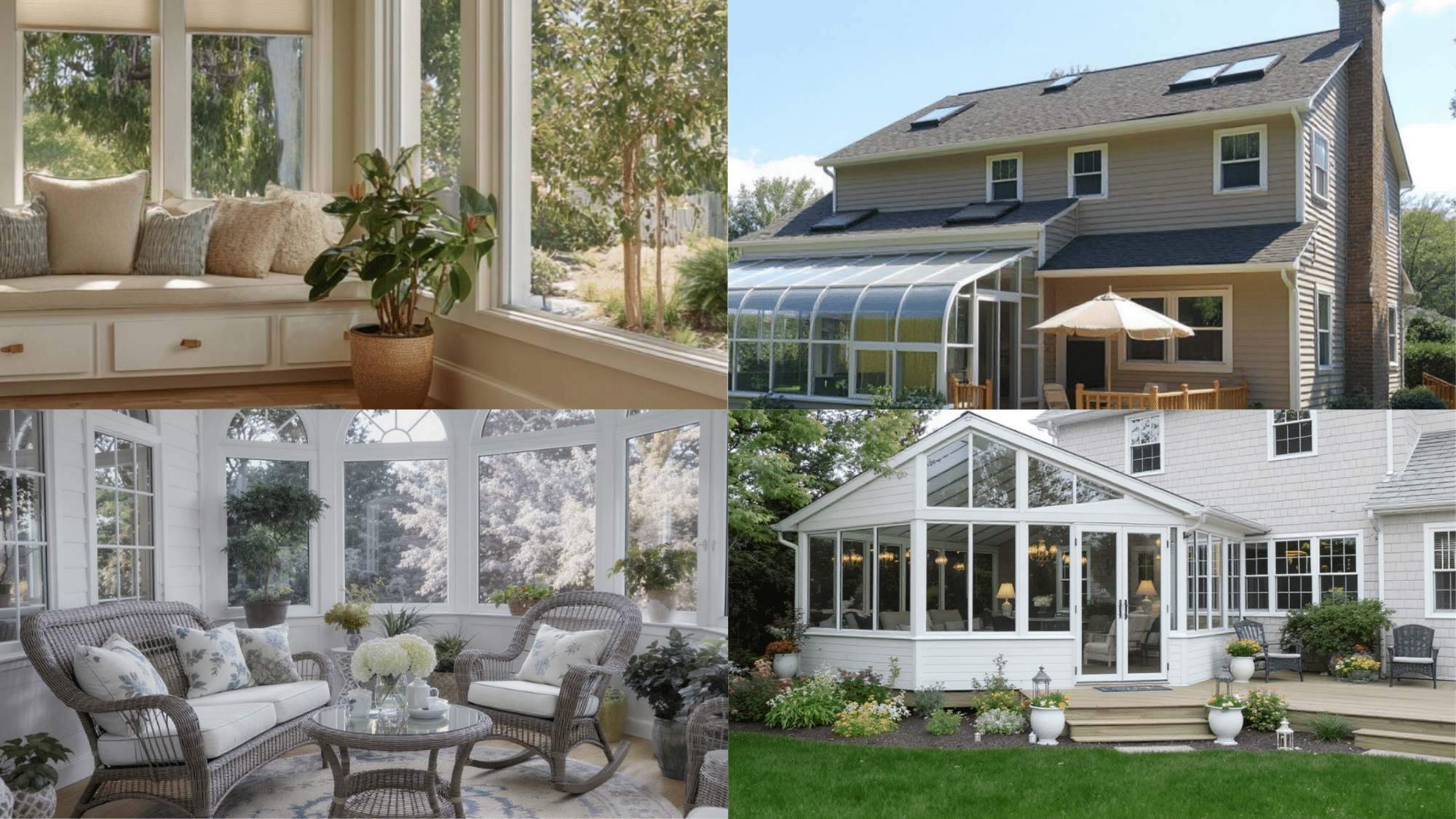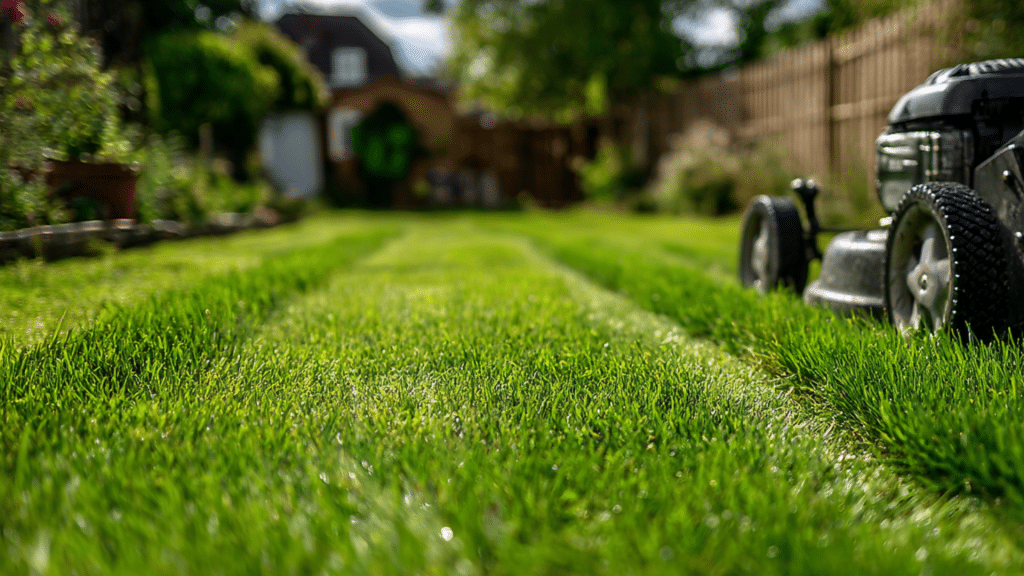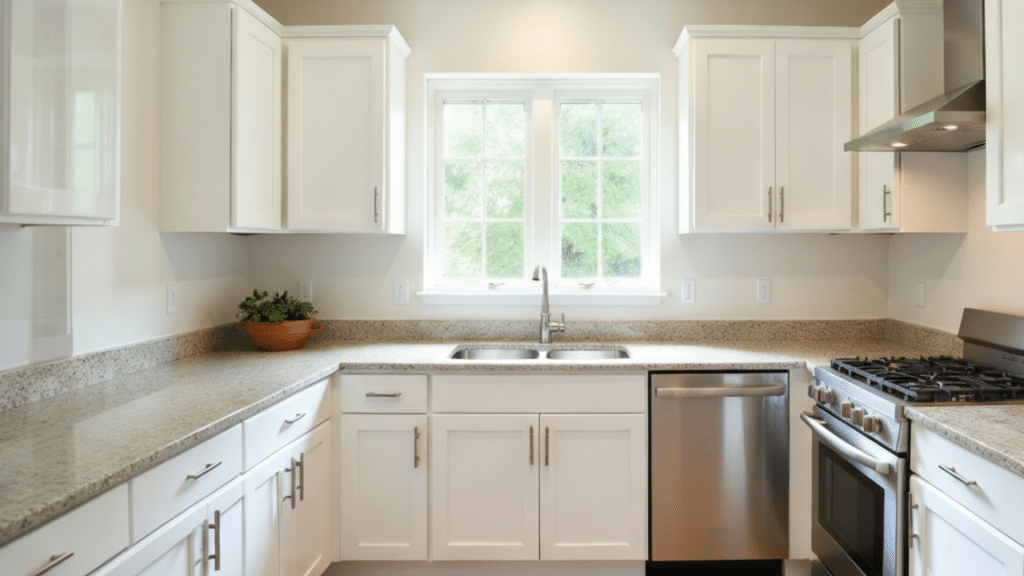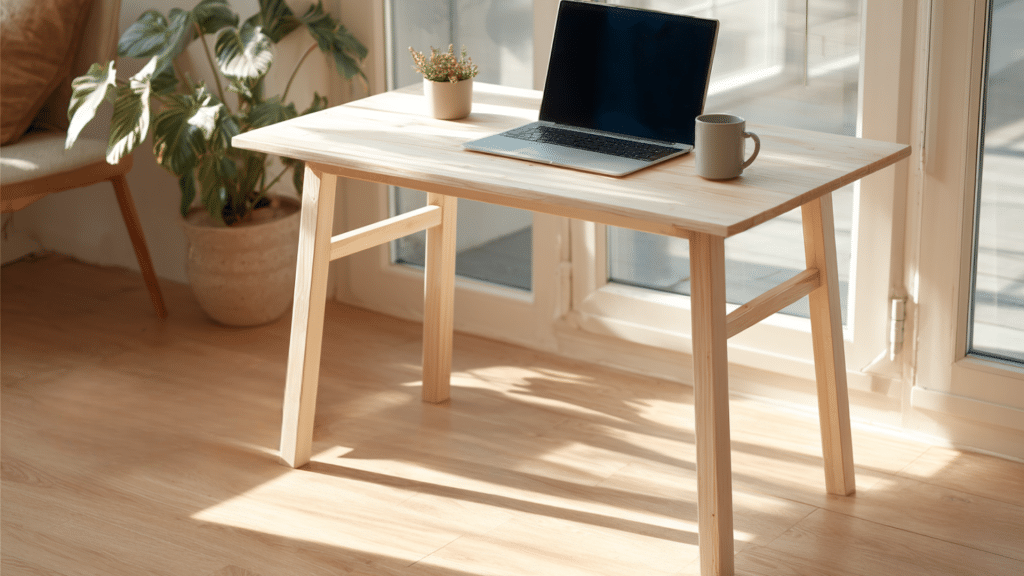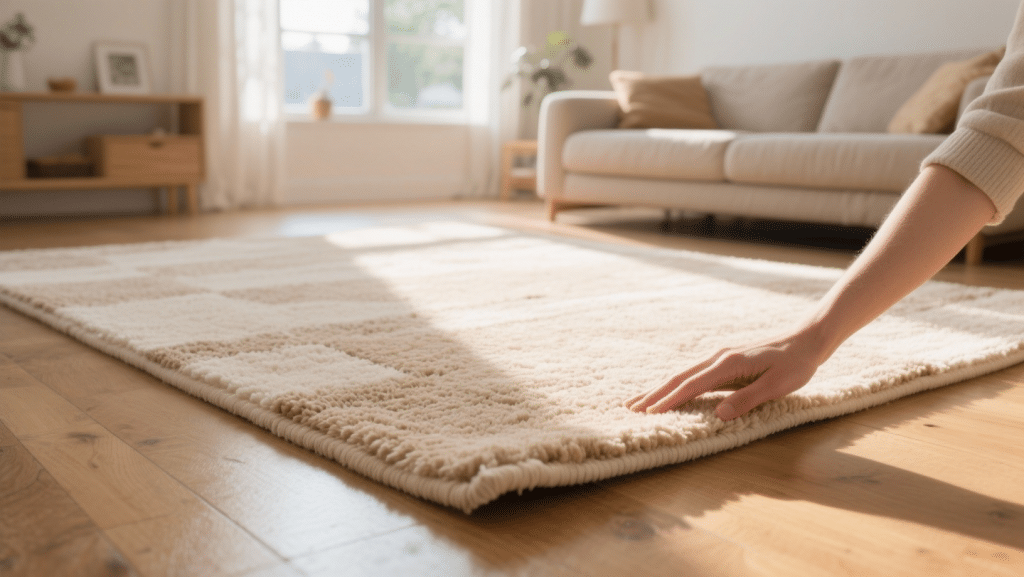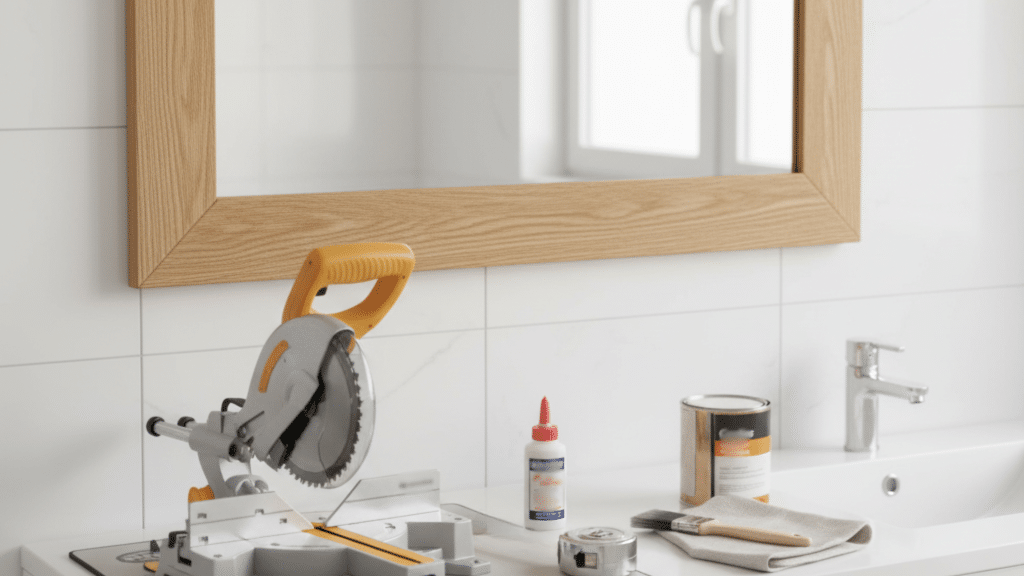People today want more living space without the hassle of major construction. They’re looking for ways to add value and comfort to their homes.
And sunroom installations offer exactly that: a simple solution that converts how they use their property.
This blog promises to show how a sunroom can become the favorite spot in any house.
You will learn about the different types available, the benefits they bring, and what makes them such a wise investment.
Why Sunrooms are a Game-Changer for Home Comfort
Sunrooms create a space that feels both indoors and outdoors at the same time. They let natural light flood in while keeping the weather out.
This means people can enjoy their morning coffee or read a book in a bright, cozy area all year round.
The added square footage doesn’t require the expense of a full room addition. Sunrooms cost less to build and take less time to complete. They also increase property value significantly.
These spaces work for multiple purposes. Some families use them as dining areas, while others turn them into home offices or playrooms. The flexibility is remarkable.
But here’s the thing: not all sunrooms suit every lifestyle. The key is matching the right design to how a family actually lives.
The Installation Process: Steps to Get it Done Smoothly
Apart from sunroom addition cost, many people wonder how to build a sunroom without major headaches.
The process is more straightforward than most people think.
Step 1: Site Assessment and Planning:
A professional team visits the property to evaluate the foundation and existing structure. They measure the space and check local building codes. This step determines what type of sunroom will work best.
Step 2: Obtain Permits and Approvals:
The contractor handles all necessary permits from local authorities. This includes zoning approvals and construction permits. Skipping this step can lead to costly problems later.
Step 3: Prepare the Foundation:
Workers pour a concrete slab or reinforce the existing foundation. Proper groundwork ensures the sunroom stays level and stable. This stage typically takes a few days to complete.
Step 4: Frame and Enclose the Structure:
The team builds the frame and installs windows, doors, and roofing. They seal everything to prevent leaks and drafts. Quality materials make a huge difference here.
Step 5: Finish Interior and Exterior:
Final touches include flooring, electrical work, and any requested features. The crew cleans up the site and conducts a walkthrough. Landowners can then start using their new space right away.
Different Sunroom Installation Ideas
The right sunroom depends on how a family plans to use the space. Different styles serve different purposes and budgets.
Here’s a look at popular types that fit various lifestyles.
1. Three-Season Sunrooms
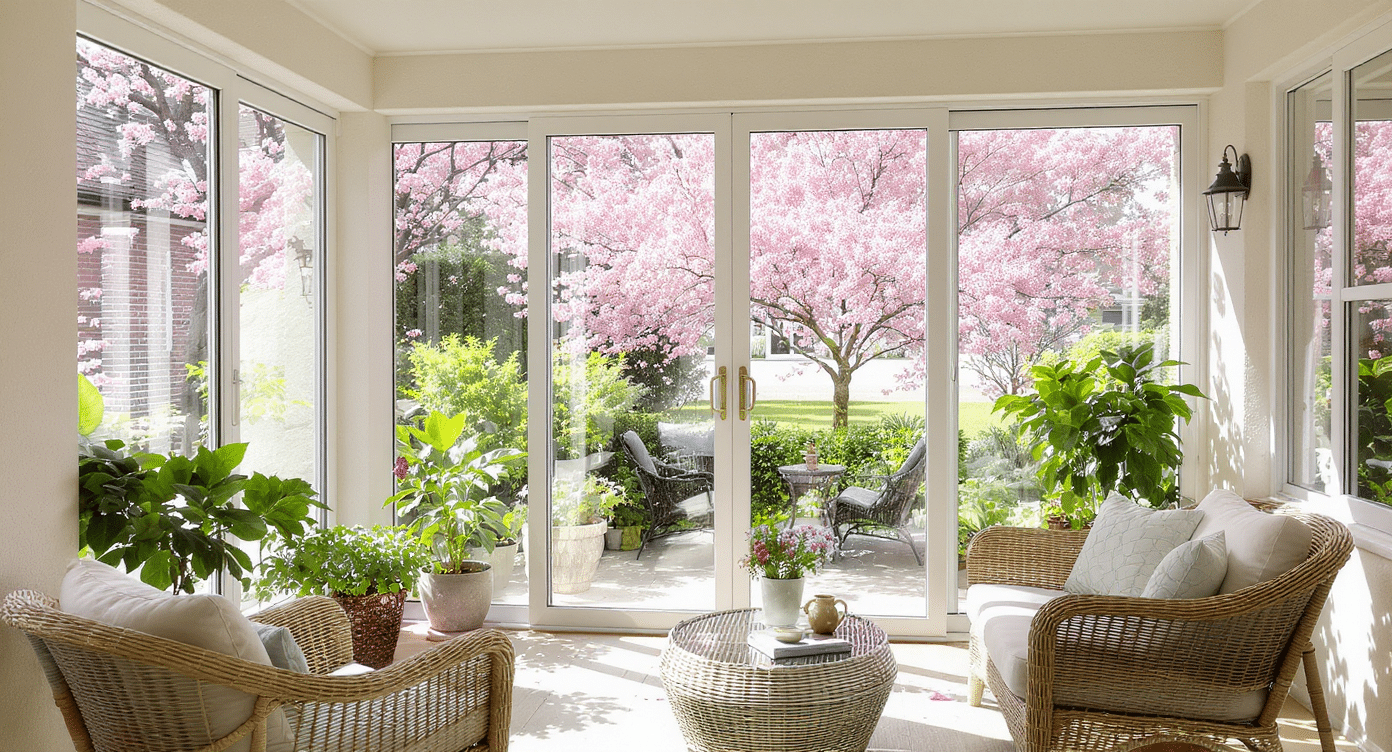
Perfect for families who love outdoor vibes but hate bugs and pollen. These spaces stay comfortable from April through October in most climates.
They’re budget-friendly since they skip the heavy-duty insulation and HVAC systems.
2. Four-Season Sunrooms
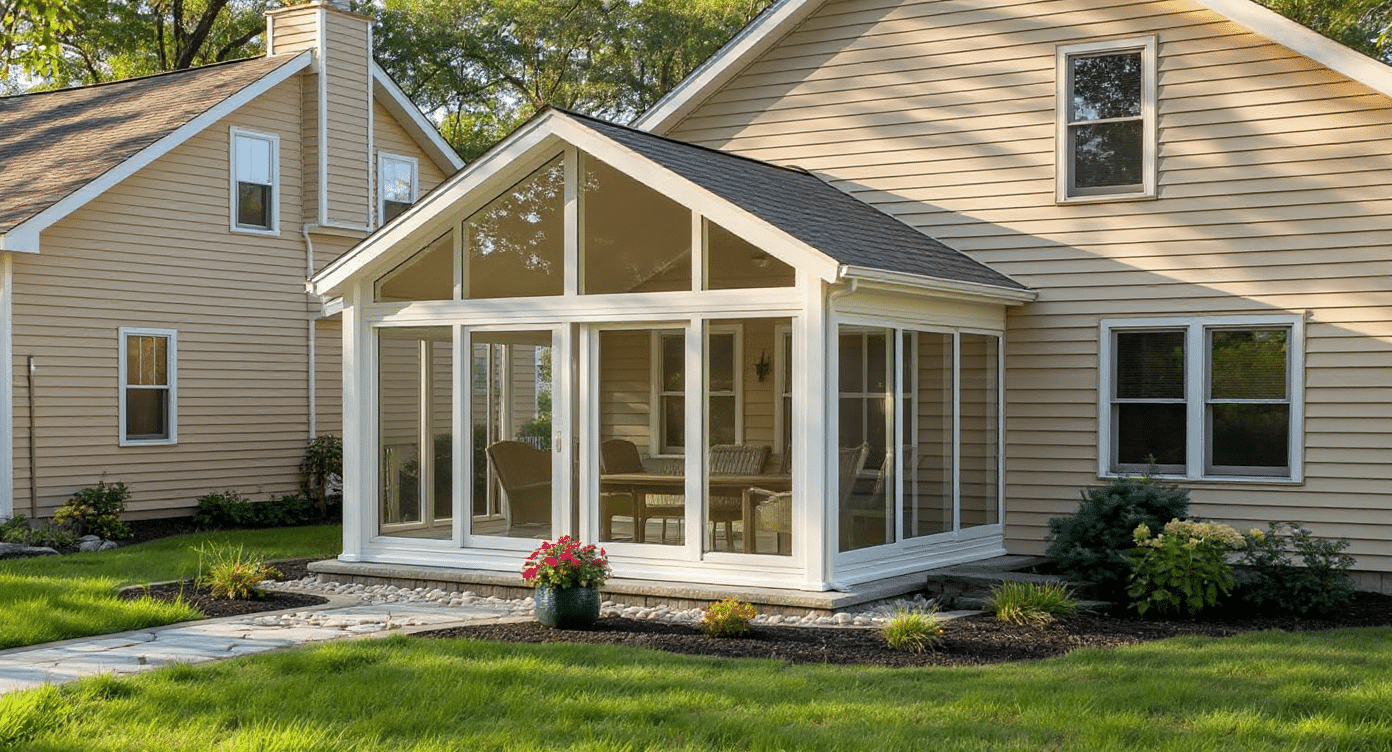
This is the fully equipped option that never closes down. Winter snowstorms or summer heat waves don’t matter here. Many people turn these into their main living area because they’re usable 365 days a year.
3. Conservatory Sunrooms
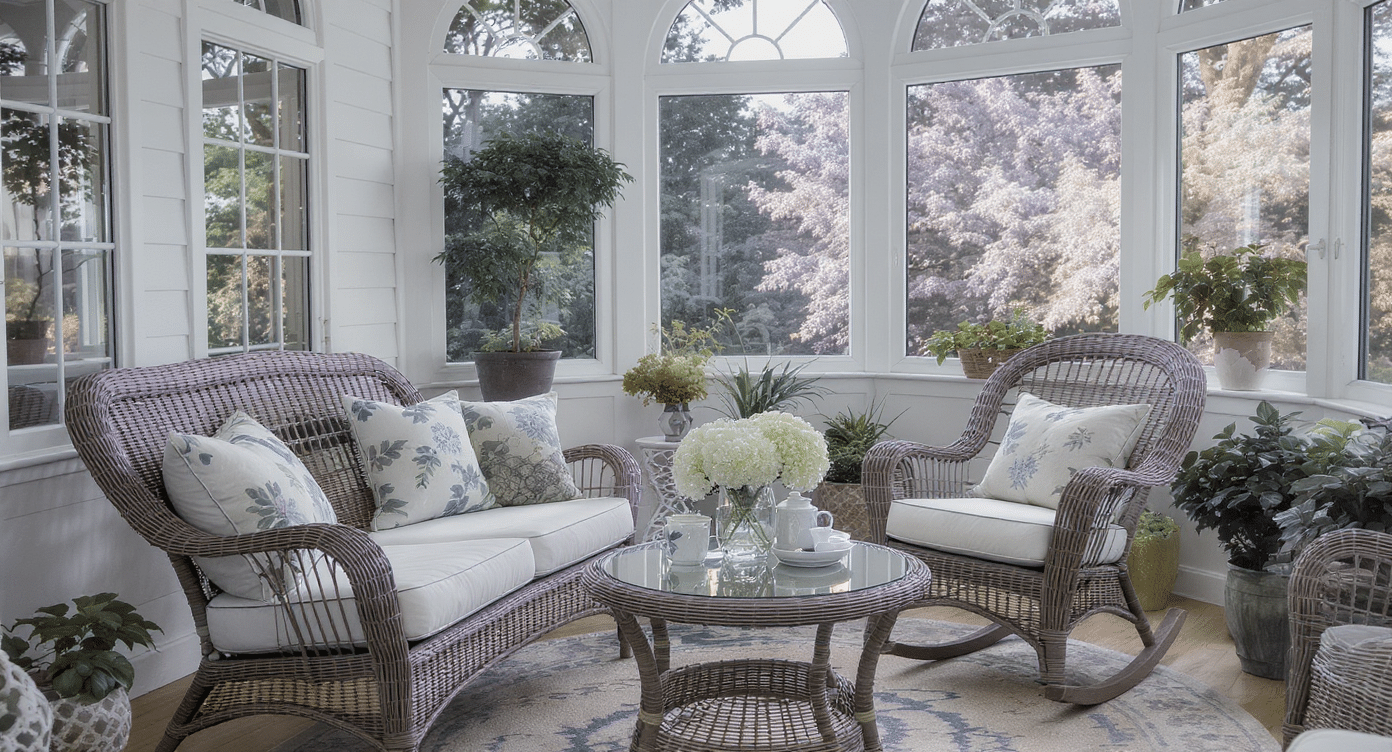
Think of this as a glass greenhouse that doubles as a living space. The all-glass construction creates a mesmerizing visual from both inside and outside the house.
Orchids, ferns, and tropical plants absolutely love the bright, humid conditions.
4. Studio Sunrooms
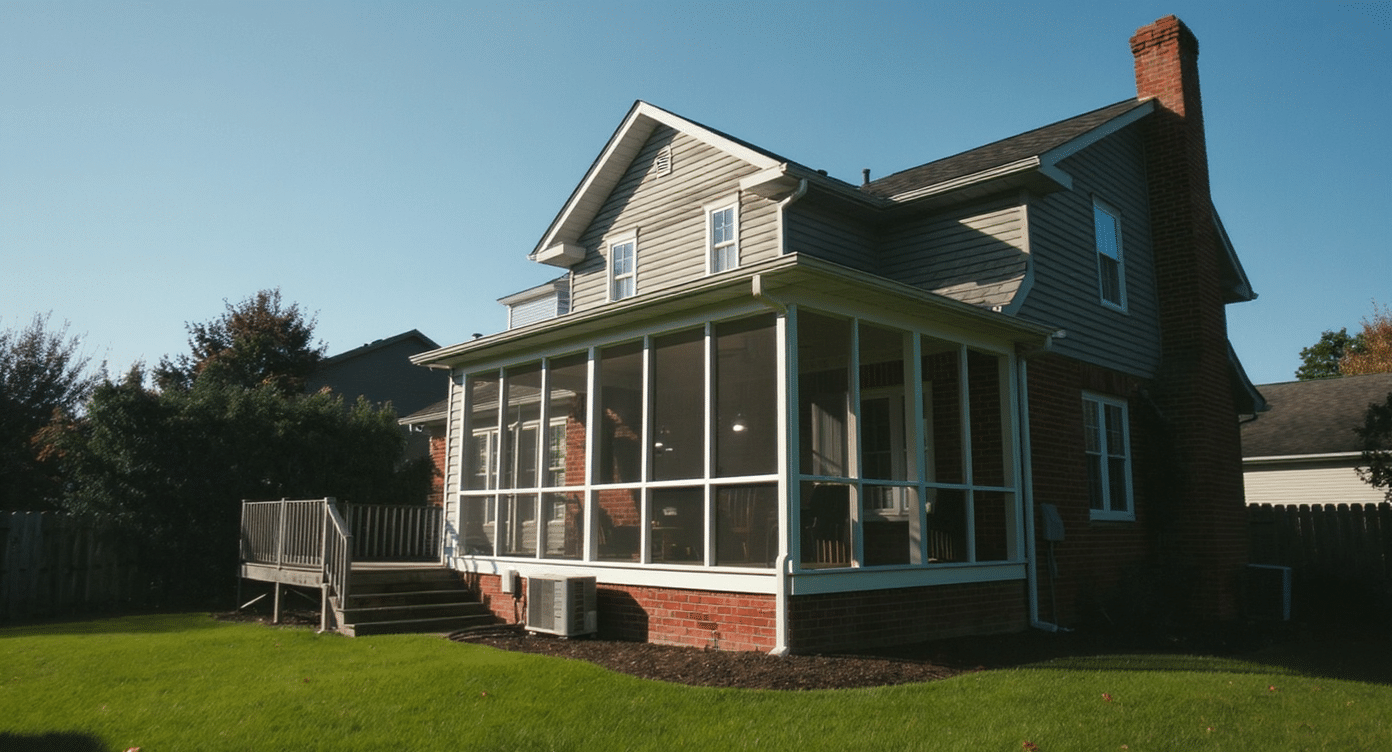
The no-nonsense choice for people who need functional square footage fast. Its boxy shape means less wasted space and lower construction costs. Writers, artists, and remote workers favor this style for its practical layout.
5. Cathedral Sunrooms
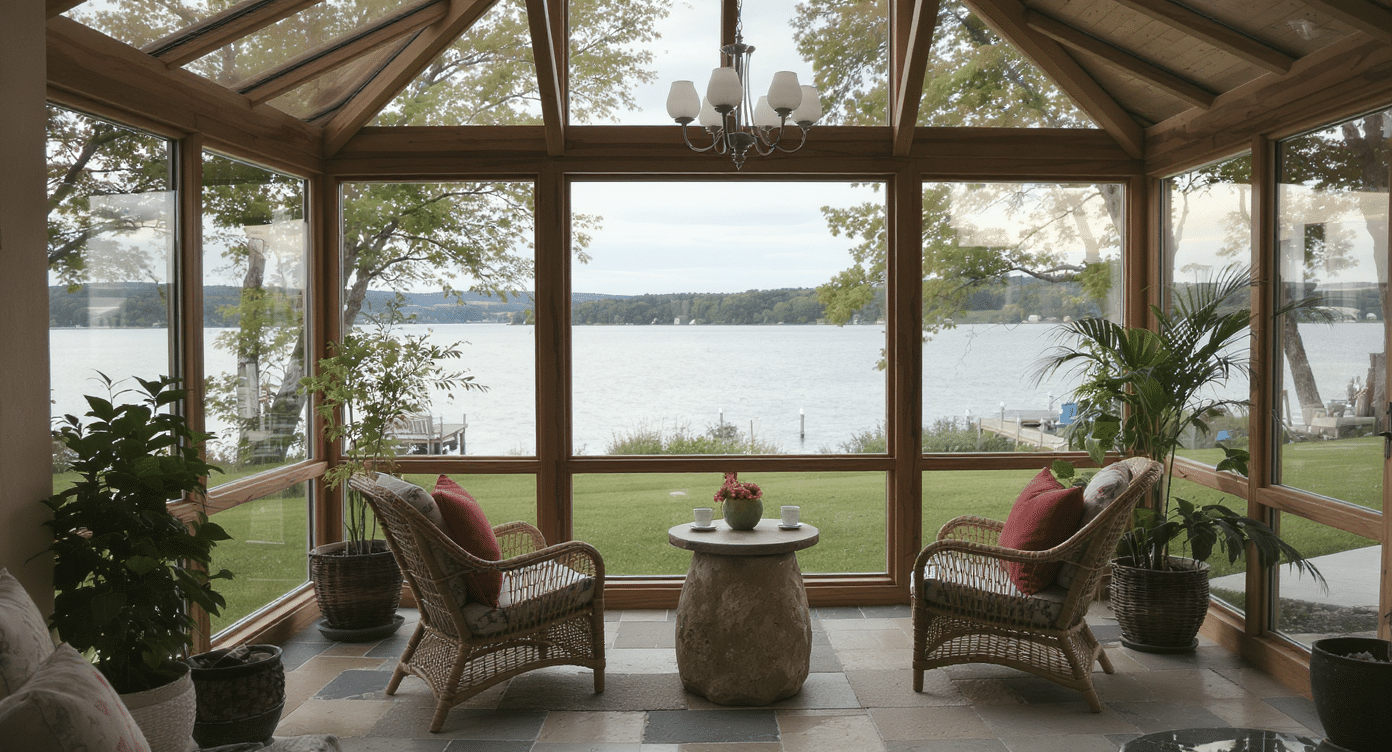
The dramatic ceiling height makes even a small footprint feel grand and spacious. Tall people especially appreciate the extra vertical room. The design also prevents that cramped, boxed-in feeling some additions create.
6. Gable Sunrooms
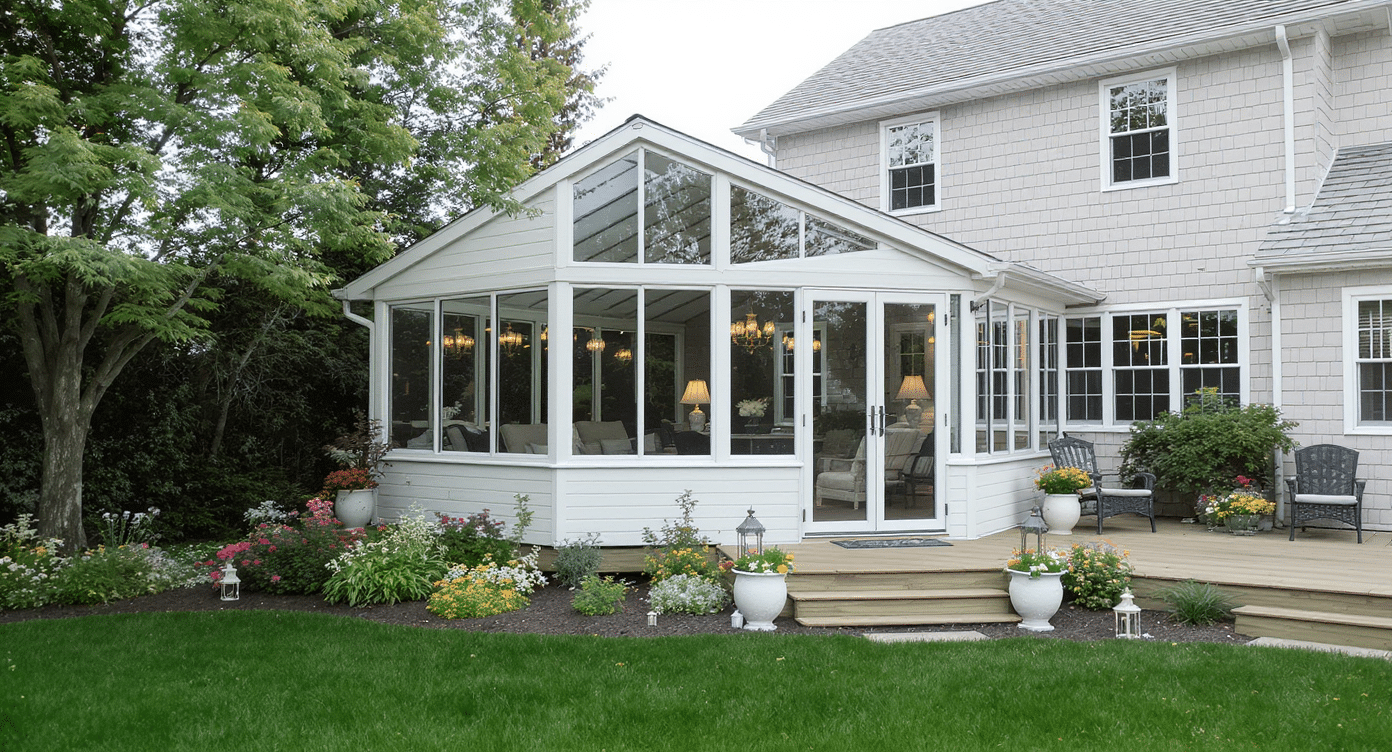
This style disappears into your home’s existing look instead of sticking out awkwardly. Neighbors might not even realize it’s an addition at first glance. The traditional peaked roof also sheds leaves and debris naturally.
7. Curved Eave Sunrooms
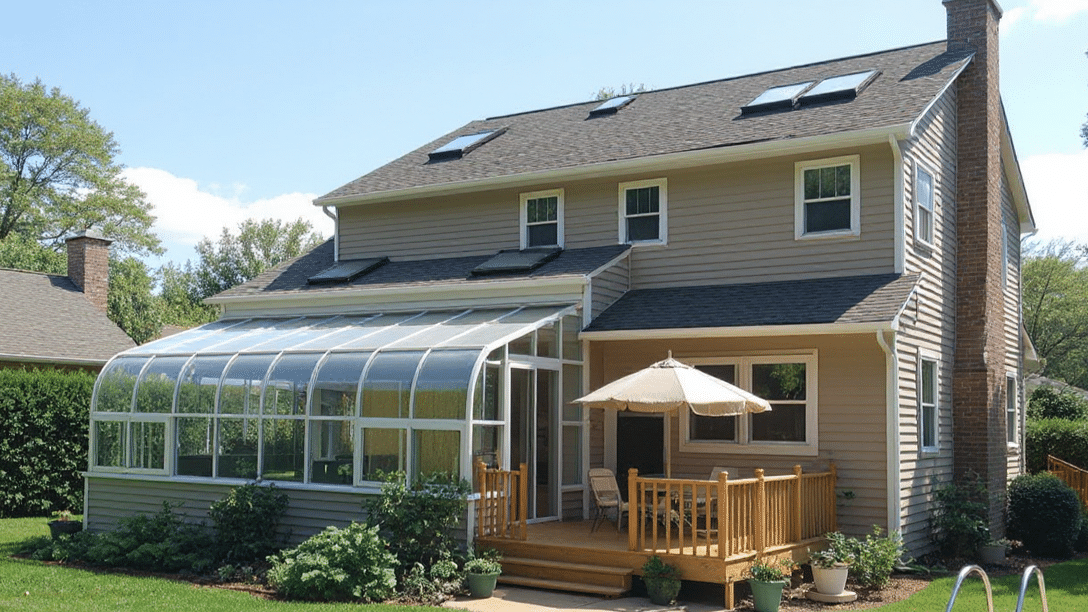
The subtle arch softens the structure without looking overly fancy or pretentious. It’s that middle ground between plain and showy. Rain runs off smoothly, and the design ages well over the decades.
Frame and Material Picks
The materials chosen for sunroom installations affect both performance and appearance.
Different climates demand different solutions. This table breaks down the most common options and what they offer.
| Material | Best For | Key Benefits | Considerations |
|---|---|---|---|
| Aluminum | Hot, humid areas | Won’t rust or rot; lightweight and strong | Conducts heat unless thermally broken |
| Vinyl | Cold climates | Excellent insulation; low maintenance | Limited color choices; can warp in extreme heat |
| Wood | Temperate regions | Natural look; good insulation | Requires regular staining or painting |
| Composite | All climates | Combines wood appearance with durability | Higher upfront cost than basic materials |
| Steel | Areas with high winds | Maximum strength and security | Heavy; needs rust-resistant coating |
If you crave a setup that breaks the mold and flat-out screams “you,” below is how to dial in those custom bits.
Customization Ideas
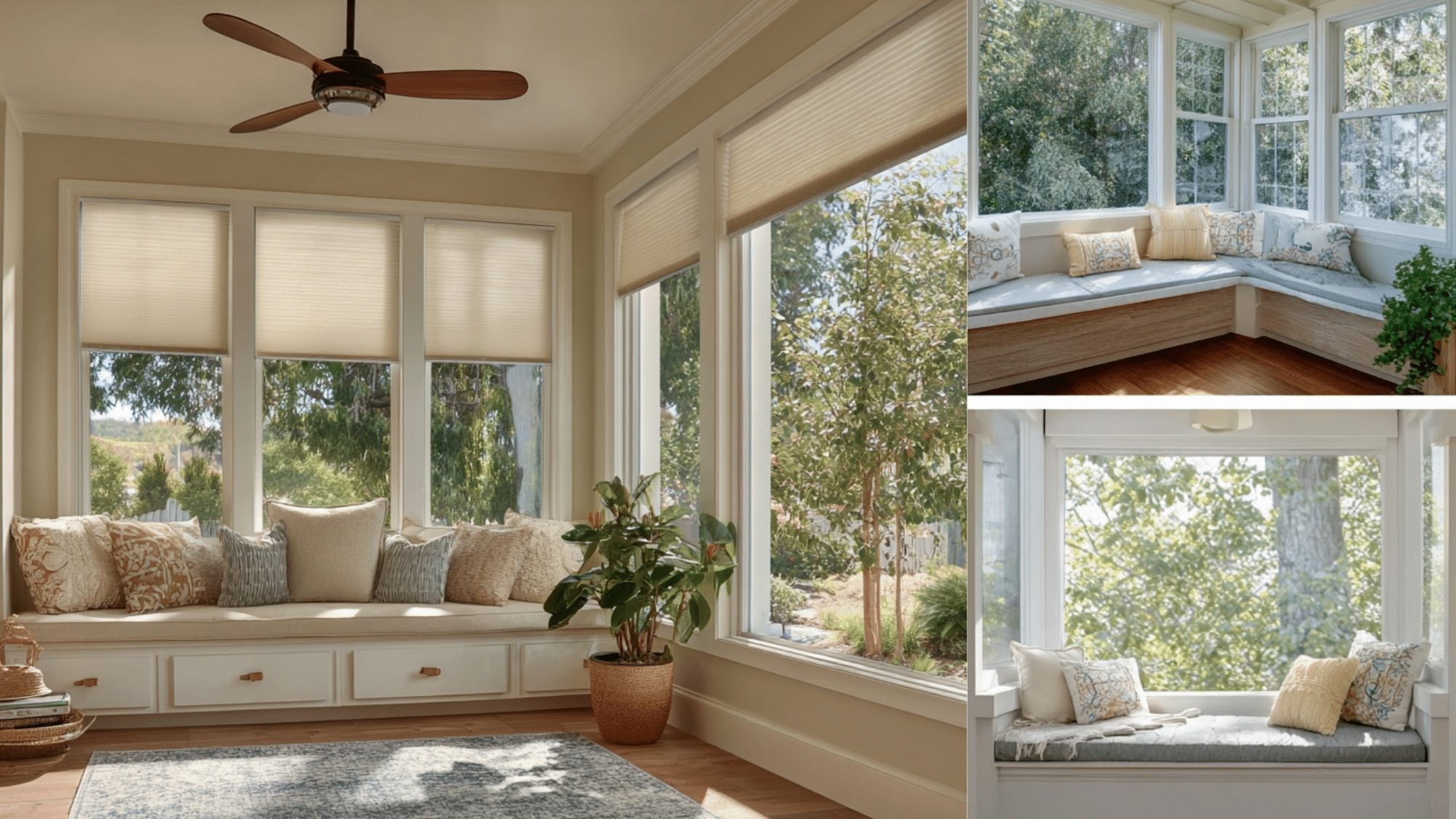
A sunroom shouldn’t look like a showroom floor. It needs to reflect how the people living there actually spend their time.
Here are some ways to make it feel personal without going overboard.
1. Built-In Seating with Storage
Window benches kill two birds with one stone. They provide cozy spots to sit while hiding clutter underneath. Add some cushions and the space instantly feels more lived-in and functional.
2. Ceiling Fans with Lighting
These keep air moving on hot days and add light to the surroundings at night. Choose a style that matches the room’s vibe. They’re practical and pull double duty without taking up floor space.
3. Retractable Blinds or Shades
Too much sun can turn a sunroom into an oven by afternoon. Motorized shades let people control light levels with a button. They also add privacy when needed without blocking views completely.
4. Flooring That Handles Real Life
Many sunroom installations overlook the importance of durable flooring choices. Tile, luxury vinyl, or stained concrete work better than carpet here. These materials handle dirt, moisture, and pet traffic without showing wear.
5. Personal Touches Through Decor
A few potted plants, family photos, or favorite books make the space feel open. Skip the staged look and add things that actually get used. The goal is comfort, not a magazine spread.
What to Budget and Why it Pays off
Money matters when planning any home project. Knowing where costs come from helps people make smarter decisions and avoid surprises.
- Basic Three-Season Sunroom: Expect to spend $10,000 to $25,000 for a standard setup with minimal features and simple finishes.
- Four-Season Insulated Room: Budget between $25,000 and $50,000 for full climate control, better materials, and year-round use.
- High-End Custom Designs: Premium options with specialty glass, intricate details, and luxury finishes run $50,000 and up.
- Return on Investment: Most additions recoup 50% to 80% of costs at resale, depending on location and quality.
- Energy Savings: Proper insulation and efficient windows can lower heating and cooling bills throughout the house.
- Permit and Labor Costs: Factor in $1,000 to $3,000 for permits, inspections, and professional installation fees.
Conclusion
Sunroom installations give families more than just extra square footage. They create a space that fits real life, not just design trends.
From picking the right type to choosing materials that last, every decision shapes how the room gets used for years to come. The investment makes sense when done right.
Better property value, lower energy bills, and a spot everyone actually wants to spend time in.
Ready to start planning your own addition? Drop a comment below with questions or share what type of sunroom catches your eye.

